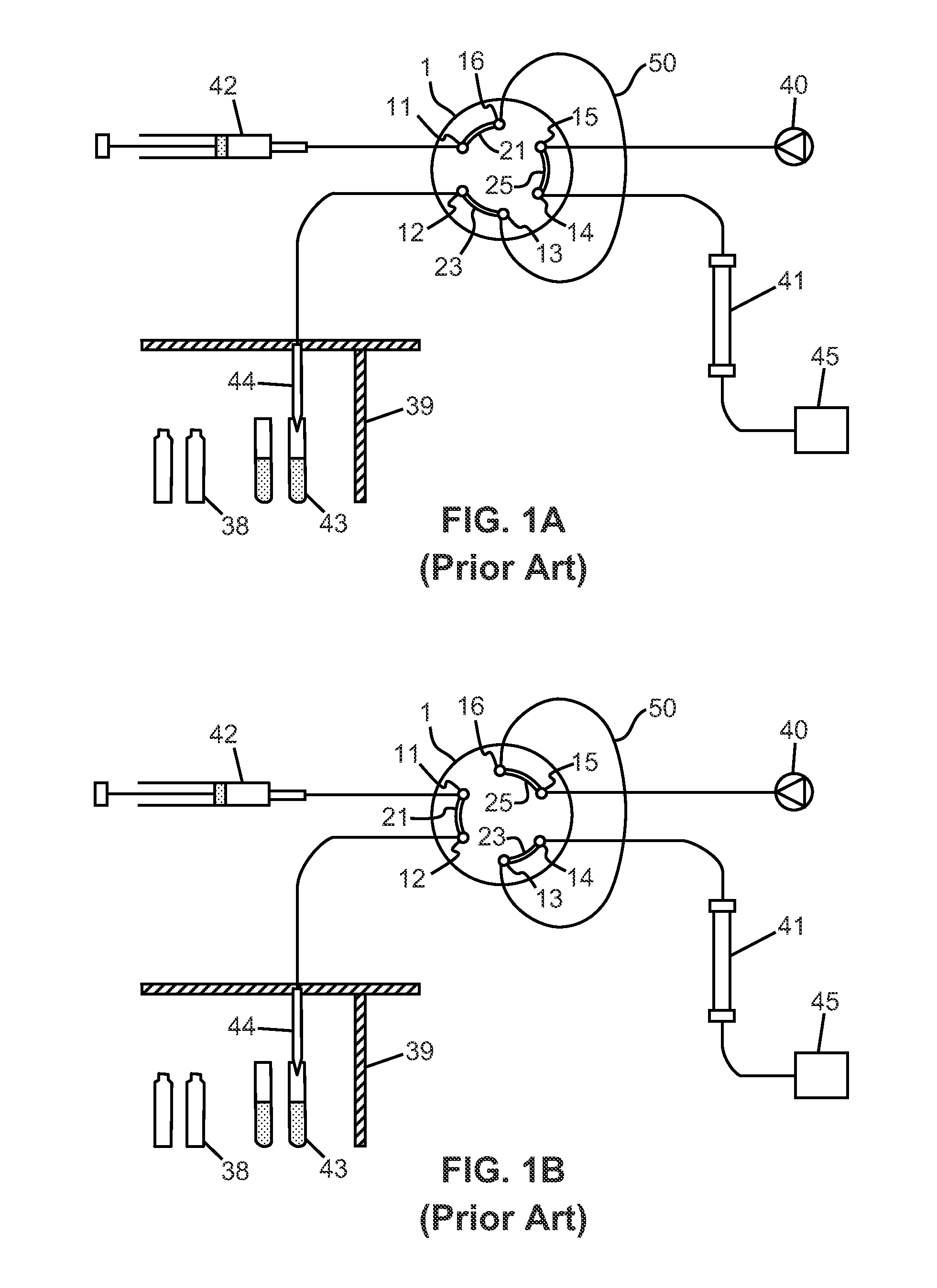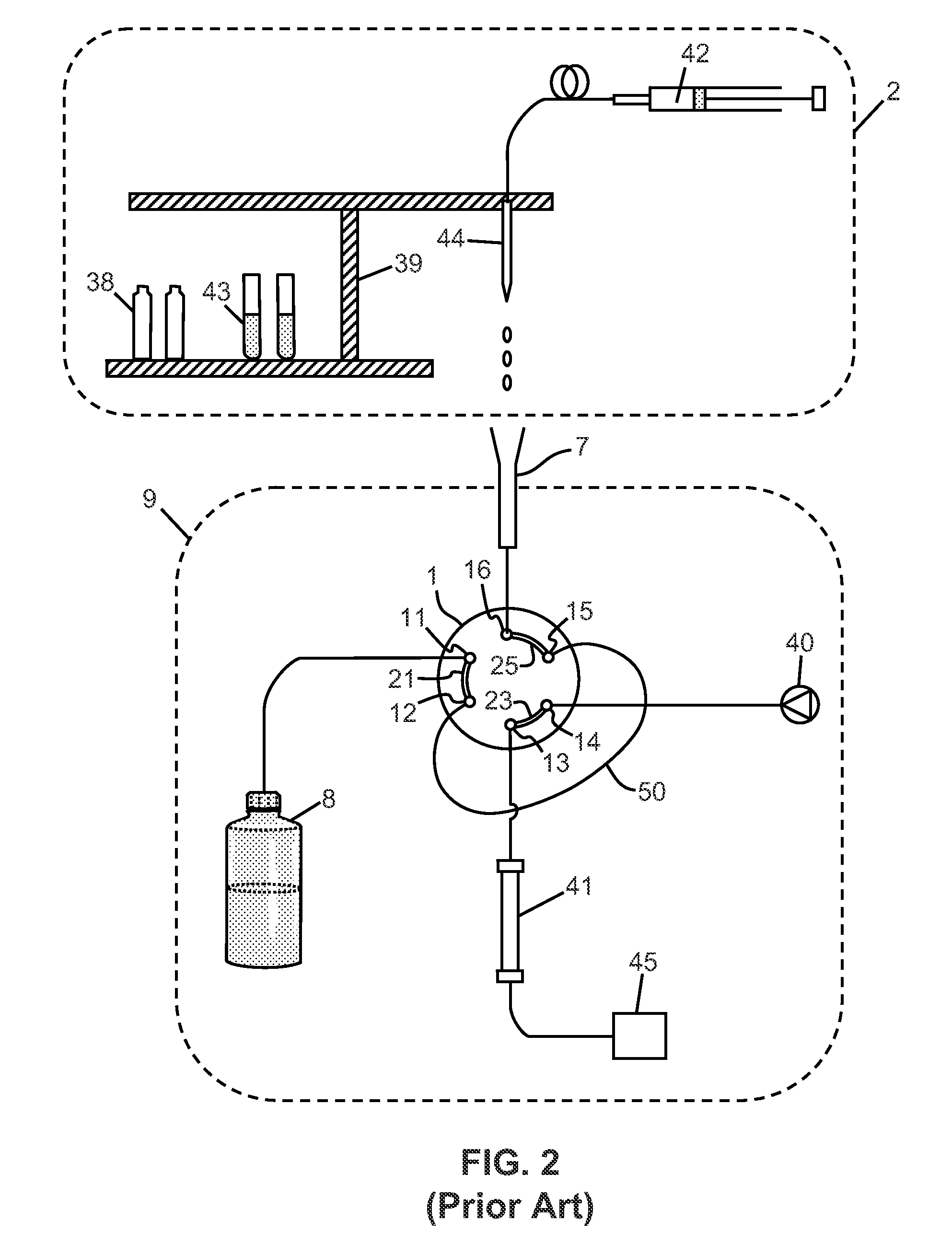Method for Automatic Optimization Of Liquid Chromatography Autosampler
a liquid chromatography and autosampler technology, applied in the field of automatic optimization of liquid chromatography autosamplers, can solve the problems of limited fluid-routing flexibility and limited ability to change solvents, direct influence of sample transportation, and difficulty in determining beforehand the duration of an autosampler procedure, so as to minimize the risk of losing or damaging a sample, the risk of holding the temperature of or otherwise excessively handling a sensitive sample is minimized, and the risk of losing or damaging
- Summary
- Abstract
- Description
- Claims
- Application Information
AI Technical Summary
Benefits of technology
Problems solved by technology
Method used
Image
Examples
Embodiment Construction
[0040]The following description is presented to enable any person skilled in the art to make and use the invention, and is provided in the context of a particular application and its requirements. Various modifications to the described embodiments will be readily apparent to those skilled in the art and the generic principles herein may be applied to other embodiments. Thus, the present invention is not intended to be limited to the embodiments and examples shown but is to be accorded the widest possible scope in accordance with the features and principles shown and described. To appreciate the features of the present invention in greater detail, please refer to FIGS. 1-8 in conjunction with the following discussion.
[0041]FIG. 6 is a schematic illustration of a preferred control software architecture for implementing methods in accordance with the present teachings. The modular software architecture system 203 illustrated in FIG. 6 is useful for—but not limited to—control of the ope...
PUM
 Login to View More
Login to View More Abstract
Description
Claims
Application Information
 Login to View More
Login to View More - R&D
- Intellectual Property
- Life Sciences
- Materials
- Tech Scout
- Unparalleled Data Quality
- Higher Quality Content
- 60% Fewer Hallucinations
Browse by: Latest US Patents, China's latest patents, Technical Efficacy Thesaurus, Application Domain, Technology Topic, Popular Technical Reports.
© 2025 PatSnap. All rights reserved.Legal|Privacy policy|Modern Slavery Act Transparency Statement|Sitemap|About US| Contact US: help@patsnap.com



